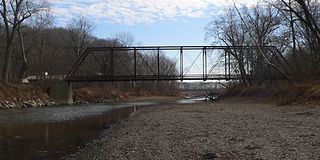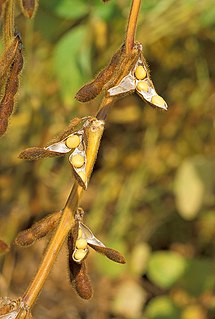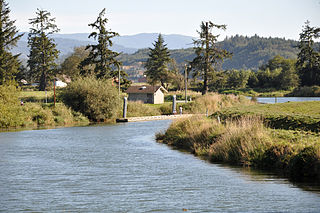| Panther Creek | |
|---|---|
| Physical characteristics | |
| Main source | Woodford County south of Minonk, Illinois 40°52′57″N89°01′32″W / 40.8825336°N 89.0256328°W |
| River mouth | Confluence with the Mackinaw River southeast of Eureka, Illinois 630 ft (190 m) 40°39′40″N89°11′47″W / 40.6611475°N 89.1964714°W Coordinates: 40°39′40″N89°11′47″W / 40.6611475°N 89.1964714°W |
| Length | 26 mi (42 km) |
| Basin features | |
| Progression | Panther Creek → Mackinaw → Illinois → Mississippi → Gulf of Mexico |
| GNIS ID | 415347 |
Panther Creek is a large creek (or small river) in the U.S. state of Illinois. [1] It rises near Minonk, and after flowing southwestward approximately 26 miles (42 km), [2] discharges into the Mackinaw River near Eureka. The largest town in the Panther Creek drainage is El Paso, Illinois.

Illinois is a state in the Midwestern and Great Lakes region of the United States. It has the fifth largest gross domestic product (GDP), the sixth largest population, and the 25th largest land area of all U.S. states. Illinois is often noted as a microcosm of the entire United States. With Chicago in northeastern Illinois, small industrial cities and immense agricultural productivity in the north and center of the state, and natural resources such as coal, timber, and petroleum in the south, Illinois has a diverse economic base, and is a major transportation hub. Chicagoland, Chicago's metropolitan area, encompasses over 65% of the state's population. The Port of Chicago connects the state to international ports via two main routes: from the Great Lakes, via the Saint Lawrence Seaway, to the Atlantic Ocean and from the Great Lakes to the Mississippi River, via the Illinois Waterway to the Illinois River. The Mississippi River, the Ohio River, and the Wabash River form parts of the boundaries of Illinois. For decades, Chicago's O'Hare International Airport has been ranked as one of the world's busiest airports. Illinois has long had a reputation as a bellwether both in social and cultural terms and, through the 1980s, in politics.

Minonk is a city in Minonk Township, Woodford County, Illinois, United States. The population was 2,078 at the 2010 census, down from 2,168 in 2000. It is part of the Peoria, Illinois Metropolitan Statistical Area.

The Mackinaw River is a 130-mile-long (210 km) tributary of the Illinois River in the U.S. state of Illinois. Its watershed covers approximately 1,136 square miles (3,000 km2), and contains some of the most productive agricultural land in the United States. The river itself maintains some of the highest quality streams in the state and provides habitat for 60-70 native fish species and 25-30 species of mussels. Its name, also spelled Mackinac, is derived from the Ojibwe word mikinaak meaning "turtle".
Panther Creek drains much of eastern Woodford County. [3] The creek flows through a region of intense corn and soybean cultivation, formerly part of the Illinois Grande Prairie. Together with the rest of the Mackinaw River's drainage, the creek ultimately feeds the lower Illinois River.

Woodford County is a county located in the state of Illinois. The 2010 United States Census listed its population at 38,664. Its county seat is Eureka.

Maize, also known as corn, is a cereal grain first domesticated by indigenous peoples in southern Mexico about 10,000 years ago. The leafy stalk of the plant produces pollen inflorescences and separate ovuliferous inflorescences called ears that yield kernels or seeds, which are fruits.

The soybean, or soya bean, is a species of legume native to East Asia, widely grown for its edible bean, which has numerous uses.
This Panther Creek should not be confused with a much smaller Panther Creek in Cass County, which flows through the Jim Edgar Panther Creek State Fish and Wildlife Area.

Cass County is a county located in the U.S. state of Illinois. As of the 2010 United States Census, the population was 13,642. Its county seat is Virginia. It is the home of the Jim Edgar Panther Creek State Fish and Wildlife Area.

The Jim Edgar Panther Creek State Fish and Wildlife Area (JEPC) is a conservation area located within Cass County in the U.S. state of Illinois. It is 16,550 acres (6,698 ha) in size. A mix of plowed upland prairie and Panther Creek woodlands, the site is managed by the Illinois Department of Natural Resources. It is drained by the Sangamon River. It is named for former Governor of Illinois Jim Edgar.










